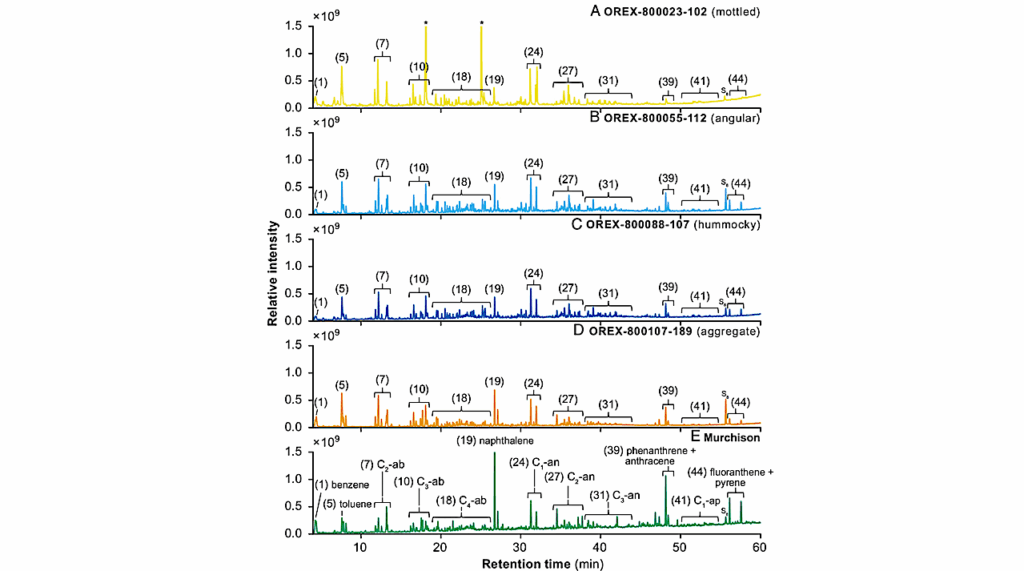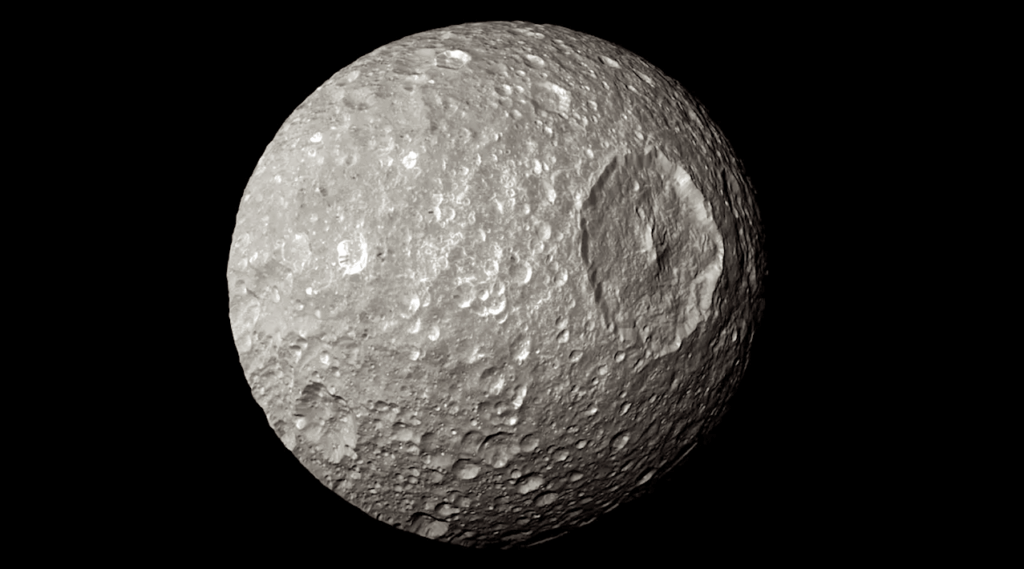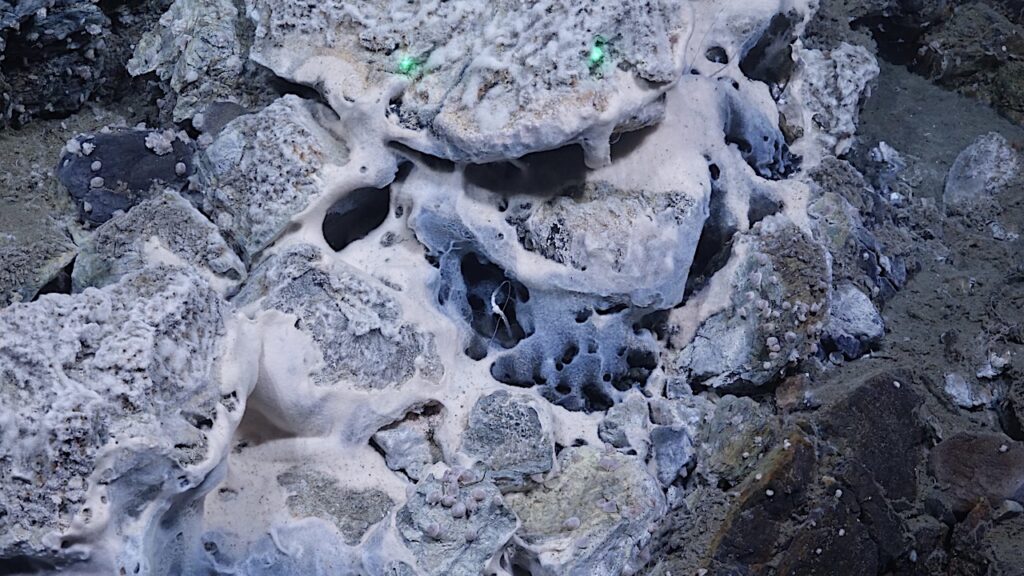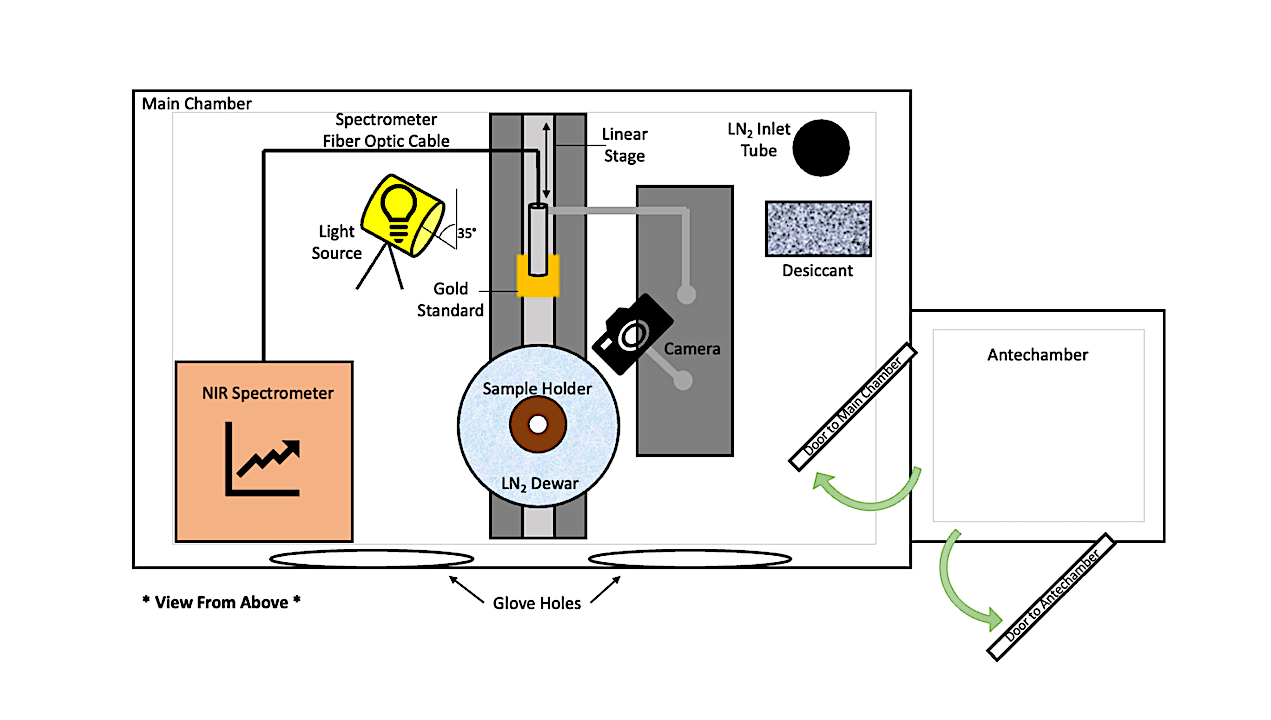Now Reading: Molecular Mobility of Extraterrestrial Ices: Surface Diffusion in Astrochemistry and Planetary Science
-
01
Molecular Mobility of Extraterrestrial Ices: Surface Diffusion in Astrochemistry and Planetary Science
Molecular Mobility of Extraterrestrial Ices: Surface Diffusion in Astrochemistry and Planetary Science
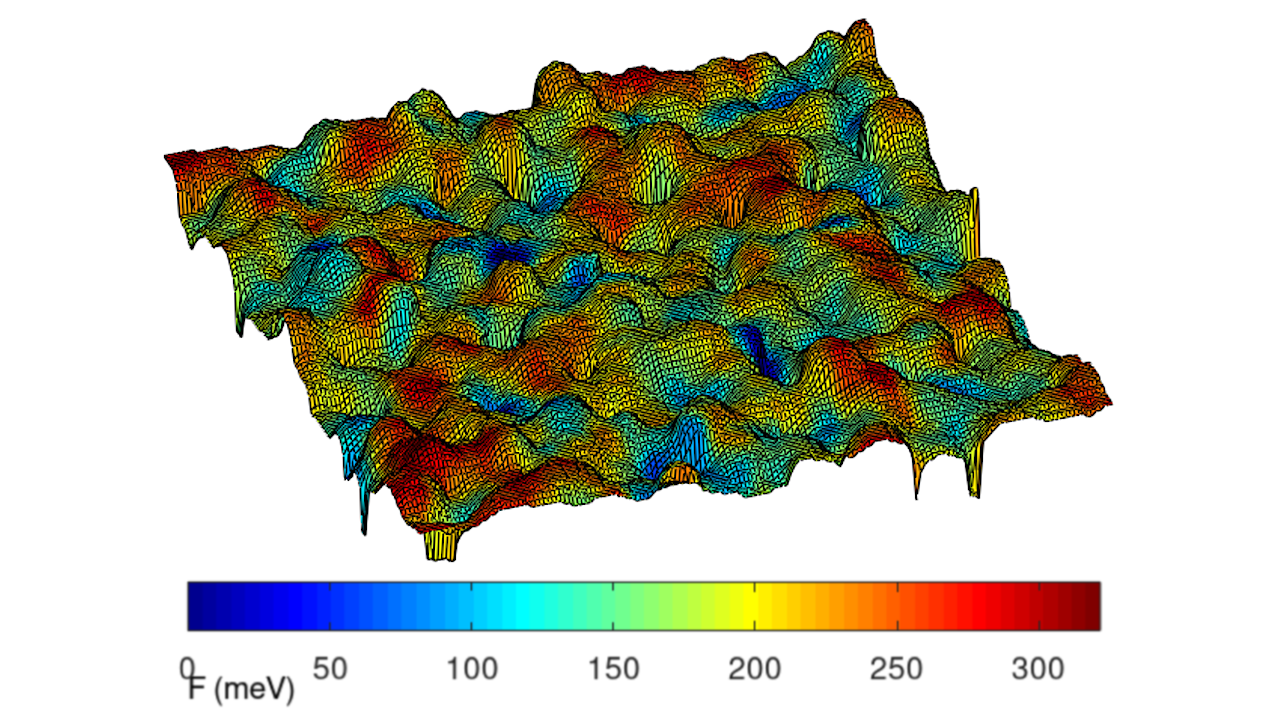

Result from a metadynamics simulation of the diffusion of a CO2 molecule over an ASW surface. The surface mesh indicates the van-derWaals surface of the ASW surface while the color coding represents the interaction free energy of the CO2 with the surface at 30 K. The most stable locations coincide with the deeper areas on the surface. Diffusion pathways between sites avoid surface protrusions. — astro-ph.SR
Molecules are ubiquitous in space. They are necessary component in the creation of habitable planetary systems and can provide the basic building blocks of life.
Solid-state processes are pivotal in the formation of molecules in space and surface diffusion in particular is a key driver of chemistry in extraterrestrial environments, such as the massive clouds in which stars and planets are formed and the icy objects within our Solar System.
However, for many atoms and molecules quantitative theoretical and experimental information on diffusion, such as activation barriers, are lacking. This hinders us in unraveling chemical processes in space and determining how the chemical ingredients of planets and life are formed.
In this article, an astrochemical perspective on diffusion is provided. Described are the relevant adsorbate-surface systems, the methods to model their chemical processes, and the computational and laboratory techniques to determine diffusion parameters, including the latest developments in the field. While much progress has been made, many astrochemically relevant systems remain unexplored.
The complexity of ice surfaces, their temperature-dependent restructuring, and effects at low temperatures create unique challenges that demand innovative experimental approaches and theoretical frameworks. This intersection of astrochemistry and surface science offers fertile ground for physical chemists to apply their expertise.
We invite the physical chemistry community to explore these systems, where precise diffusion parameters would dramatically advance our understanding of molecular evolution in space – from interstellar clouds to planetary surfaces – with implications on our understanding on the origins of life and planetary habitability.
N.F.W. Ligterink, C. Walsh, H.M. Cuppen, M.N. Drozdovskaya, A. Ahmad, D.M. Benoit, J.T. Carder, A. Das, J. K. Díaz-Berríos, F. Dulieu, J. Heyl, A.P. Jardine, T. Lamberts, N.M. Mikkelsen, M. Tsuge
Comments: Published in PCCP
Subjects: Solar and Stellar Astrophysics (astro-ph.SR)
Cite as: arXiv:2510.01018 [astro-ph.SR] (or arXiv:2510.01018v1 [astro-ph.SR] for this version)
https://doi.org/10.48550/arXiv.2510.01018
Focus to learn more
Journal reference: Phys. Chem. Chem. Phys., 2025, 27, 19630-19641
Related DOI:
https://doi.org/10.1039/D5CP02278A
Focus to learn more
Submission history
From: Niels Ligterink
[v1] Wed, 1 Oct 2025 15:25:53 UTC (576 KB)
https://arxiv.org/abs/2510.01018
Astrobiology, Astrochemistry,
Stay Informed With the Latest & Most Important News
-
 012024 in Review: Highlights from NASA in Silicon Valley
012024 in Review: Highlights from NASA in Silicon Valley -
 02Panasonic Leica Summilux DG 15mm f/1.7 ASPH review
02Panasonic Leica Summilux DG 15mm f/1.7 ASPH review -
 03How New NASA, India Earth Satellite NISAR Will See Earth
03How New NASA, India Earth Satellite NISAR Will See Earth -
 04And Thus Begins A New Year For Life On Earth
04And Thus Begins A New Year For Life On Earth -
 05Astronomy Activation Ambassadors: A New Era
05Astronomy Activation Ambassadors: A New Era -
06SpaceX launch surge helps set new global launch record in 2024
-
 07Space Force plans new ‘Futures Command’ amid pressure to speed up modernization
07Space Force plans new ‘Futures Command’ amid pressure to speed up modernization












